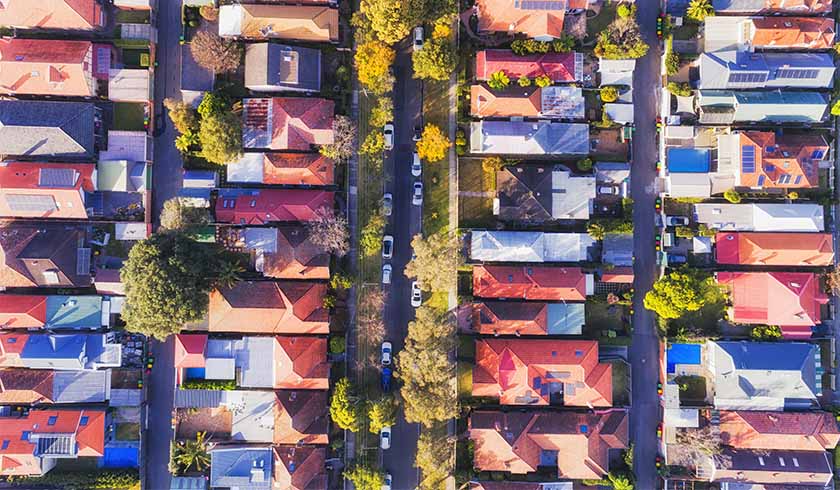What’s the full impact of the current property downturn?
A new ranking has extrapolated which markets have experienced price drops since their peak, with some popular investing locations seeing prices become more affordable.

While historical data has generally pointed to rising property prices over the last few decades, there have been some locations where the opposite has occurred, according to CoreLogic’s latest Property Pulse. It noted eight property market downturns occurring since 1980.
Currently, values have fallen by 6.8 per cent and have done so since the latter part of 2017. While this is a relatively small decline, the downturns between 1982-83 and 2008-09 were the only ones that have been larger, and the current downturn is the second-longest, surpassed only by the 2010-12 downturn which went for 18 months.
Over the combined capitals, the downturn has seen values fall by 8.6 per cent, stemming from declines in all capital cities bar Hobart. If next month is another decline, this will be the largest downturn across the capital cities since 1980. It also is set to be the longest, as the downturn has lasted for 17 months while the record is 20 months between 1989 and 1991.
On a brighter note for investors, however, the Property Pulse report noted that the declines are set to ease through this year and next.
After declines, historical data shows market recoveries are rapid, but the current conditions are unlikely to support this, the report noted.
“Recoveries have generally been driven by lower interest rates or a mix of stimulus such as the first-home buyers grant boost,” it stated.
“Although there is an expectation that interest rates may move lower, we probably won’t see the entire rates cuts passed through to mortgage rates and the much tighter credit conditions are likely to limit any rebound in the housing market, particularly given borrowers are being assessed on their ability to repay a mortgage at a much higher rate (above 7 per cent).”
The Property Pulse report also analysed the performance of each capital city market:
Sydney
Sydney has seen its values decline by 13.2 per cent since July 2017, which the Property Pulse labelled as potentially the “deepest and longest in modern times”.
“This downturn is also very different to other downturns which have generally been driven by an economic contraction or higher interest rates,” it noted.
“This downturn is more closely linked to a significant tightening of credit conditions at a time in which the economy continues to grow and interest rates are unchanged (despite some moderate increases for owner-occupiers and larger rises for investors).”
Melbourne
Values in Melbourne have declined from a November 2017 peak by 9.6 per cent, and is approaching its largest downturn of 10 per cent experienced between 1989 and 1992. However, this is nowhere near the longest, which lasted 36 months in 1989-92.
Brisbane
Brisbane saw its values decline from its April 2018 peak by just 1 per cent, with its fall being labelled as moderate.
Adelaide
Much like Brisbane, Adelaide’s declines have also been moderate, easing by just 0.3 per cent from its peak in December 2018.
“While there have been previous periods of value falls in Adelaide, they have tended to be more moderate than those recorded across the other capital cities,” the Property Pulse stated.
“To-date the decline has been short and moderate and it will be interesting to see over the coming months whether values continue to fall.”
Perth
Coming off the mining boom, Perth prices peaked much earlier in June 2014, with values now down by 17.8 per cent since then.
This downturn, according to the Property Pulse, has run longer and deeper than previous downturns, and its recovery has been delayed.
“In late 2017/early 2018 it was looking as if the falls were coming to an end however, the market has weakened further in line with weaker labour market and economic conditions as well as tighter credit conditions,” the Property Pulse noted.
Hobart
Defying all other capital city trends, dwelling values are on the rise, with annual growth rates up at 7.2 per cent. This growth rate, however, is the capital city’s slowest since October 2016.
“Housing affordability has been a big driver of growth over recent years, however housing affordability has been eroded and there is a likelihood that the rate of growth will continue to ease over coming months,” the Property Pulse stated.
Darwin
Darwin’s housing data starts from 1999, with only two downturns between now and then. Its current downturn started in May 2014; the city has seen values decline by 27 per cent since, which is longer and deeper than the previous one, as well as for any capital city in a similar time frame.
This decline is expected to worsen this year due to a weak labour market.
Canberra
Values in Canberra edged lower by just 0.2 of a percentage point in February, and even though the Property Pulse stated that there is no evidence of declines, growth rates have been slowing.
Yet the report said this is not a sign of worry for the nation’s capital city.
“It is clear that some heat has exited the Canberra housing market,” the Property Pulse noted.
“Although values may edge lower, the outlook for Canberra’s housing market is likely to be relatively steady.”
